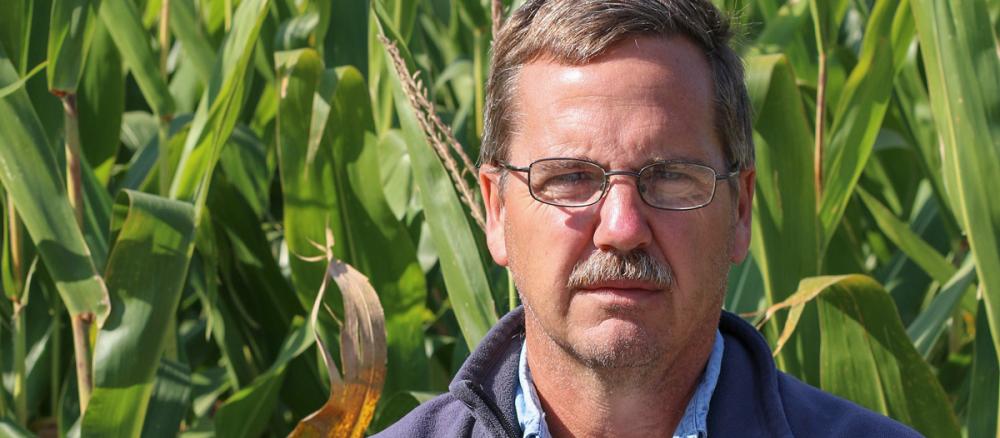Talking by phone from a tractor cab, Stephan Melson simultaneously kept an ear out and responded to occasional radio transmissions. "That bin is about full…" heard in the background, about the early October corn harvest under way.
It is always a busy time of year for Melson, his brothers and father, who farm near Trimont in southern Minnesota. If farming isn’t enough, as a certified crop consultant, Melson also follows the fortunes of his farmer-clients.
About two dozen certified crop consultants in Minnesota advise farmers covering about 20-25% of the state’s 20-plus million acres of cropland (out of 54 million acres total land area), according to Melson’s estimate.
Most are members of the Minnesota Independent Crop Consultants Association, which sets high standards for business ethics and technical training. They are extremely knowledgeable about all aspects of crop production, and “we can’t sell products,” Melson says. The MICCA annual convention via Zoom is set for Feb. 17, 2021.
Advising farmers about seeds, fertilizers, pesticides, and other countless decisions about crop farming, crop consultants also have the potential for promoting sustainable practices to benefit water quality, soil health, and mitigation of greenhouse gases and impact on climate change. Agricultural best management practices (BMP) that improve soil health can add resiliency to the climate changes that are already underway.
Minnesota has set a goal to reduce greenhouse gas emissions by 80% by 2050, but we’re not on track to meet this goal. “Agriculture accounts for approximately one-quarter of Minnesota’s GHG emissions, but through best practices and smart land management we can reduce emissions and help our working lands hold more carbon in the soil,” says Laura Bishop, Minnesota Pollution Control Agency commissioner and chair of Governor Tim Walz’ climate subcabinet.
In late September, state officials visited Olmsted County’s Soil Health Farm to highlight practical solutions like expanding cover crops and planting vegetative buffers. You can read more about the connections between climate change and agriculture in these recent reports from state agencies:
- 2020 State Water Plan (EQB)
- Climate impacts on agriculture
- Climate Change Trends and Action Plan (BWSR)
An MPCA report estimates the impact of 21 different agriculture best practices on greenhouse gas emissions. For example, grass buffers can reduce greenhouse gas emission by as much as 0.77 tons per acre, according to the report.
At the same time, agriculture may have no choice other than to adapt to climate change. Research published in Nature Communications shows that as warmer weather migrates northward, so must crop varieties. That could be mitigated by using more conservation farming practices now.
Melson agrees there is more potential for using such conservation practices. “While a longer growing season has proven to be beneficial to Minnesota farmers, I'm very aware rising atmospheric carbon levels are leading to more sporadic weather increasing our risk of drought or severe weather events. The challenge of using more conservation practices lies in addressing the additional cost, and building confidence among farmers that it will be successful.”
“Water quality is often a local issue,” he says. “If there is a lake or other water body close by, they are very aware, but not so much if it’s far away.” That proximity issue is evident in efforts to address hypoxia in the Gulf of Mexico. Drainage from the nation’s midsection, much of it cropland, causes a large area of low dissolved oxygen, the result of excess nutrients and bacterial action.
In Renville County, Dean Dambroten’s corn field withstood an 80-mile-per-hour wind assault last summer, while it flattened cornstalks in a neighboring field. “I think it was the benefit of strip-till and improved soil structure,” he says. Practices such as strip-till and cover crops are also among the greenhouse gas arsenal.
“Although his crop was not completely immune to the effects of that wind event, his crop was certainly more resilient as compared to most,” said crop consultant Dorian Gatchell, who farms near Montevideo. “I have seen similar things with growers like Dean who have ‘better’ management practices.”
Gatchell wrote Crop management key to weathering storms, published in the October 2020 issue of The Farmer magazine.
“We all recognize that our weather has been changing over time,” Gatchell says. “These changing weather events are changing how growers must manage their crop. Growers are very interested in Best Management Practices that make their crop healthier, and it turns out the BMPs that do that happen to help mitigate climate change as well. I don’t think growers consciously adopt climate change mitigation tactics for that alone, but gladly adopt them when they also show better crop management.”
